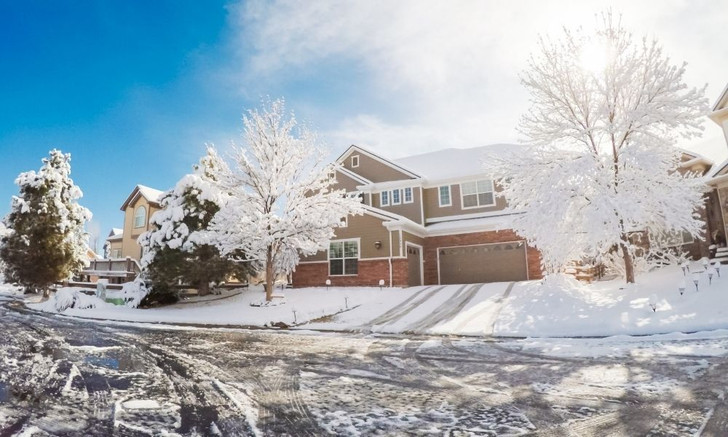From basic seepage to full-blown floods, you never want to see water in your basement. But when the spring thaw arrives, particularly after a heavy snowfall, the odds are that all the water outside will find a way in. Fortunately, melting snow is an easy problem to tackle than most occurrences of torrential rains and rising waters. Here are several ways to keep melting snow out of your basement.
Shovels Aren't Just for the Driveway
When that first big snow hits, right after you finish shoveling the driveway and sidewalks, walk around your house's perimeter with a shovel. As a rule of thumb, keep snow at least five feet away from the foundation (and especially from basement windows and doors). When it melts, snow water will seek to enter your home by any available (and probably unseen) crack or hole. Don't give the snow a chance to melt and pool. This can happen during winter too as temperatures rise and fall, and it can add to the risk of mold in the basement.
Install Window Well Covers
Window wells provide a bit of sunlight in your basement. With many basements being below grade, however, a structure is necessary to keep dirt out while letting the sunshine in. Window wells perform this function, but it also leaves them-and the basement-open to water infiltration. Before the snow and rain hits, install heavy-duty window well covers. They'll keep out and divert rain and snow.
Look To the Roof
Your roof may seem like an unlikely source of water in the basement, but it can happen in more ways than one. Get a roof inspection and see whether your roof needs replacement or repair. There may be places on the roof you need to patch where water enters the attic and walls and finds its way to the basement. Regularly clean out your gutters and ensure the downspouts are clear and able to direct water away from the foundation. During the winter, prevent the development of icicles and ice dams on your gutters. Not only can they cause damage to the gutters themselves, but they can also concentrate water in certain spots, permitting it to enter your home and ruin your walls, ceilings, and floors.
Seal It Up
While complete waterproofing is a job best left to a professional, you can do an outside perimeter check of your home in search of places where water can enter. Check for cracks and holes, as well as places where wires, pipes, and other fixtures enter your home to see if they're loose or have too-wide spaces around them. Caulk or other sealants can be used here to keep out water. Ensure any basement doors or windows have been caulked or insulated. As a final note, ensure the soil around your foundation is sloping away. It's your first line of defense in the many ways to keep melting snow out of your basement.

 Lifetime Warranty On All WWS Covers
Lifetime Warranty On All WWS Covers
 Free Shipping On All Products
Free Shipping On All Products





 (262) 633-3707
(262) 633-3707

 info@windowwellsupply.com
info@windowwellsupply.com
